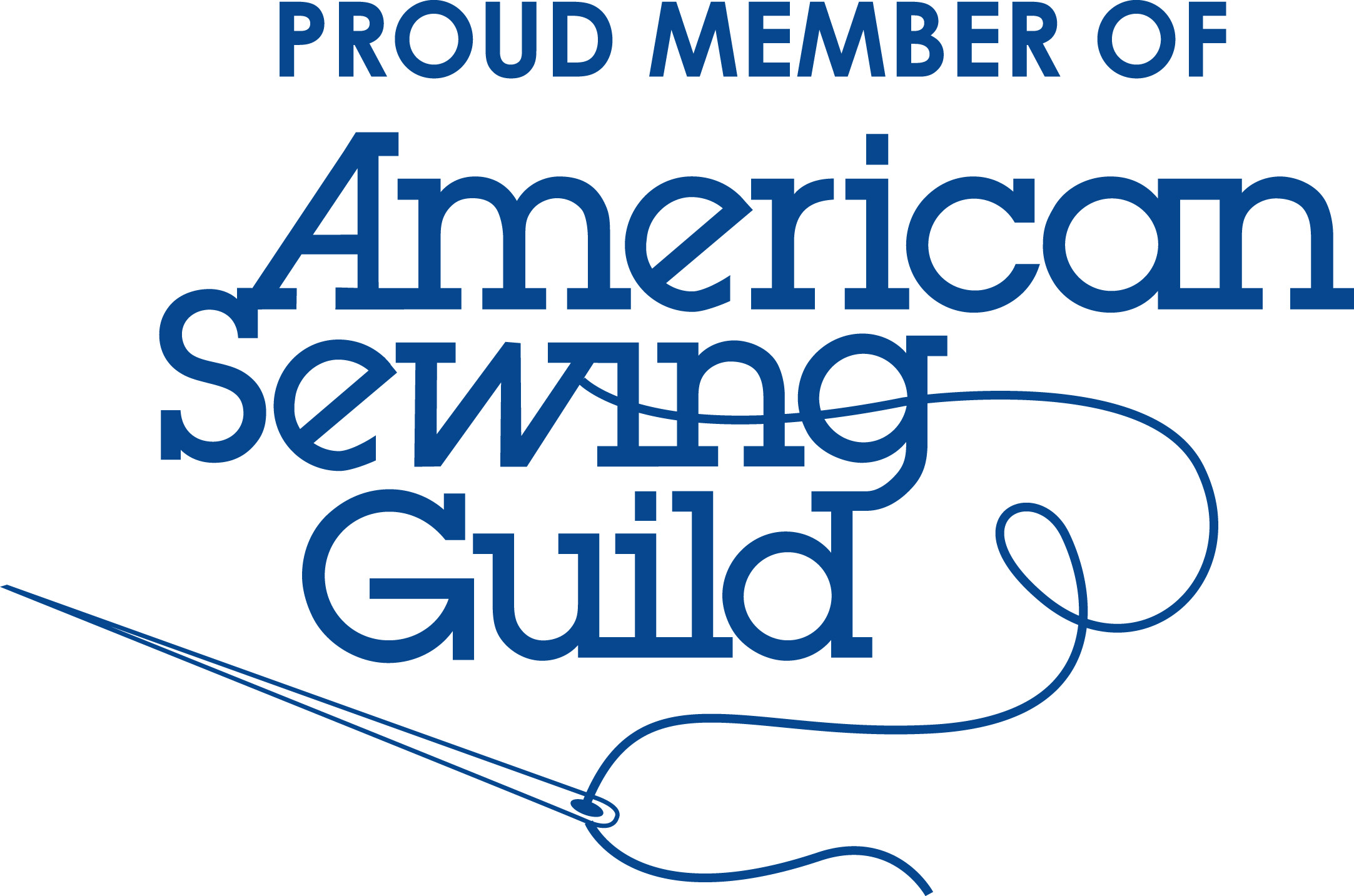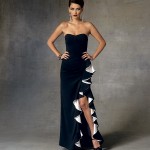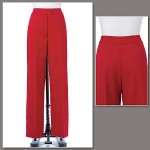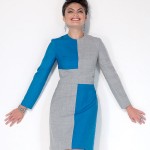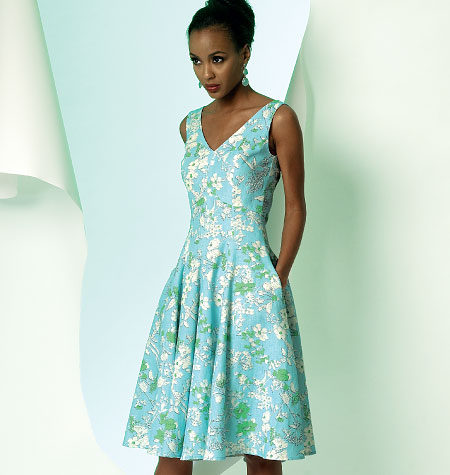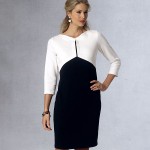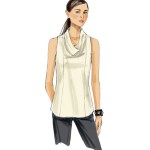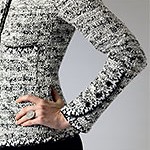When we sew, there are some basic things that we need to know, most of which don’t cause us much worry because they come to us naturally. Then there are those things that pattern instructions tell us to do and we have no idea what they are talking about! That’s what this page has been created for. These are my “I don’t get it” moments that I had to learn and would like to share with you. Undoubtedly it will grow with time!
Back Waist Length – The dimension on a body, taken from the top of the back bone at the base of the neck to the waistline.
Bag Lining – Sew around a hem (and possibly the sides), right sides together, one of the fashion fabric and one of the lining. Turn inside out. Press carefully. The remaining seam can be treated as one, or the outside can be machine stitched and the lining side tucked under and closed.
Example: Instructions for bag lining a skirt:
1) Sew the skirt pieces together. Sew the lining together. Pin them right sides together. Stitch them together at the hem. Turn them right-side-out, press. It looks like a bag.
2) The balancing of the hem takes place at the waist. There it can be treated as one piece of fabric or separately.
Block/Sloper – These two terms tend to be used interchangeably, but there is actually a difference.
A sloper is a basic fitting pattern that fits the body closely like a second skin and therefore has little ease and no seam allowances. Another term for sloper is fitting shell. When wearing ease is added, then the sloper becomes a block. There are different blocks for different types of garments.
Facing – A facing is fabric used to finish the raw edges of a garment such as at neckline and armhole. Shaped facings are cut to match the edge they will face, and bias facings are strips of fabric cut on the bias or cross-grain and shaped to fit edge.
Flat felling – Sewing a seam that is made by placing one edge inside a folded edge of fabric and then stitching the folded edge down. A felled seam is useful for keeping seam allowances flat and covering raw edges. This technique is used in shirtmaking and the construction of denim jeans.
Findings – Any extra items attached to a garment during the manufacturing process. This can include trims, buttons, hooks, snaps, or embellishments.
Flat Lining – Flat lining is sewing with the lining flat against the inside of the outer fabric, at the same time. The seams show inside this way. Victorian bodices are often flat lined, and the raw edges are neatly finished on the inside.
Example: Sewing a corset
1) Place each piece of the fashion fabric and its matching lining with wrong sides together. Smooth them out and pin carefully all around the pieces.
2) Stitch them together, stitching slightly inside the sewing line using a slightly looser stitch than normal.
3) After they are secured together, remove the pins and treat as one piece of fabric… The fabric will now have a heaver hand and work better where heavy fabric is required.
Gathering – A technique for shortening the length of a strip of fabric so that the longer piece can be attached to a shorter piece. It is commonly used in clothing to manage fullness, as when a sleeve is attached to the armscye or cuff of a shirt, or when a skirt is attached to a bodice. In simple gathering, parallel rows of running stitches are sewn along one edge of the fabric to be gathered. The stitching threads are then pulled or “drawn up” so that the fabric forms small folds along the threads. Multiple rows of gathering are called shirring.
Grain – The lengthwise and crosswise grain of fabric refer to the directions parallel to the warp and weft, respectively. “With the grain” indicates parallel to the threads of a woven fabric, lengthwise or crosswise.
Hand – The way the fabric feels when it is touched. Terms like softness, crispness, dryness, silkiness are all terms that describe the hand of the fabric. A good hand refers to shape retention without stiffness.
Inseam – The distance from the bottom of a trouser leg to the crotch. The measurement is taken along the inside leg seam that joins the front and the back leg panels.
Interfacing – Fabrics used to support, reinforce and give shape to fashion fabrics in sewn products. Often placed between the lining and the outer fabric, it can be made from yarns or directly from fibers, and may be either woven, nonwoven, or knitted. Some interfacings are designed to be fused (adhered with heat from an iron), while others are meant to be stitched to the fashion fabric.
Interlining – 1. An insulation, padding, or stiffening fabric, either sewn to the wrong side of the lining or the inner side of the outer shell fabric for extra weight and warmth. The interlining is used primarily to provide warmth in coats, jackets, and outerwear. 2. Firm stiff linen canvas for men’s coats.
Lining – A fabric that is used to cover the inside of a garment to provide a finished look as well as prevent seams from raveling, concealing figure faults and making it easier to slip on and off. Generally, the lining is made of a smooth lustrous fabric.
Princess seams – Princess seams are shaped seams that run down the front side of a dresses or shirt to fit a garment closely. Use them in place of darts. They are very elegant.
Sloper/Block – These two terms tend to be used interchangeably, but there is actually a difference.
A sloper is a basic fitting pattern that fits the body closely like a second skin and therefore has little ease and no seam allowances. Another term for sloper is fitting shell. When wearing ease is added, then the sloper becomes a block. There are different blocks for different types of garments.
Underlining – The purpose of an underlining is to add stability and strength to lightweight fabrics though additionally can be helpful in preventing seam allowances from showing through and concealing any hand stitching that may be required. The fabric is cut from the same pattern pieces as the fashion fabric and attached before construction of a garment begins. The underlining and fashion fabric are then handled as a single unit. Underlining is often cut from fine cotton batiste, light to medium-weight cotton broadcloth or silk organza, however there are other materials that can be used.
Warp – In all woven fabrics, this is the set of yarn running lengthwise – machine direction – parallel to the selvage and interwoven with the filling. It is the set of yarns wound together on a beam for the purpose of weaving or warp knitting.
Weft – In woven fabric, the filling yarns that run perpendicular to the warp yarns.
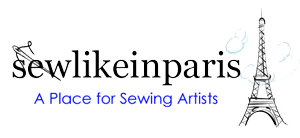

 Portland, Oregon,
Portland, Oregon, 